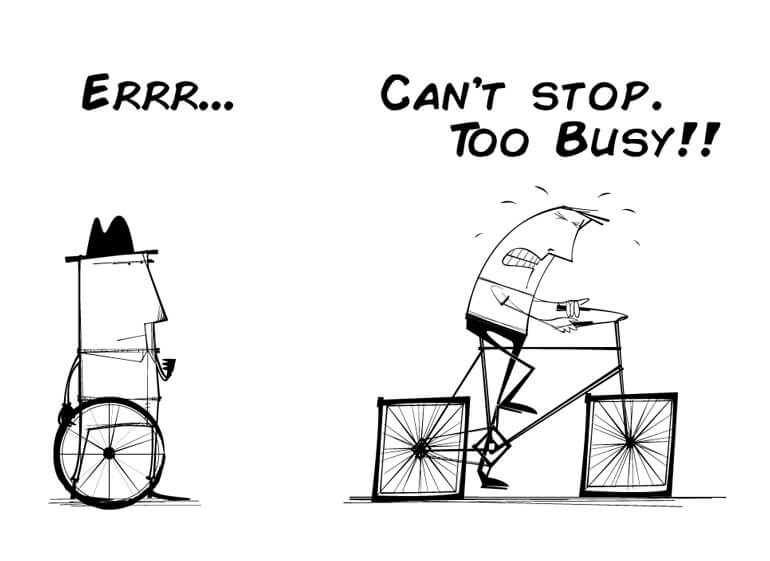
Don’t let Friction slow your success (aka Embrace the Mavericks.) Friction Series Part Five
June 10, 2021
STEP Platform supports Ethos® for Watchman Customers, Improving the Ellucian Colleague® User Experience
June 23, 2021We’ve been writing about “Friction” in campus processes for the past weeks. Posts One , Two, Three, Four and Five
We’ve described many of the problems we solve and the value many perceive from solving them too including: Inclusive Access, Bursar Billing, and Sponsored Accounts Management.
So why is it so hard to match software and automation to new programs? Clearly, one reason is because purchasing decisions and processes take time. Software and vendors bring in additional out-of-budget costs and performance risks. And change is hard. But why is embracing that change so hard sometimes*?
The Stan Problem
A close friend of the company who spent his career working on Campus and with Campus Stores describes what’s called “The Stan Problem” (Note, the problem he describes isn’t unique to Higher Ed. All organizations probably recognize the approach he describes. And in software development it’s analogous to technical debt.)
He describes it as:
“One good thing about campuses is the abundance of labor. When a problem emerges, a person is almost always available to fix it with enough time and manual processes. This can be great for students. Students need things. Students need work too. And the local community benefits with more work too. It’s not unusual for institutions to give departments and groups more people to help when there’s a problem that needs urgent attention.
Of course, many departments are understaffed. However, sometimes, adding more people to a problem isn’t the best long-term solution. Those people who get piled onto a broken process are sometimes colloquially called “Stan”. The Stan Problem” is more than just a woman or man named Stan who’s been assigned a task. “The Stan Problem” is a mindset. It’s the notion that applying a band-aid solution is okay without recognizing that this solution creates even more friction over time. And can stifle innovation and improvement. All while keeping the right staff from being added to handle the big problems needing attention.
The capacity to apply manual processes is almost always there to solve problems, regardless of whether or not there’s a more efficient way to do it. In other words, why use a piece of software to solve a problem more efficiently when Stan is available to go in the back and fill out a few forms or complete a spreadsheet? You’re paying Stan anyway. Whether or not you implement a more efficient way to do something, you’re still paying Stan. Further, sure, there are other things Stan could help with that also need doing but the work he’s doing here is urgent so it gets done. That’s “The Stan Problem”. It’s ubiquitous.
Here’s how “The Stan Problem” works: friction is identified, an inefficient (usually human) solution is applied, time passes, significant resistance develops to the idea of changing the process because changing the current solution would require too much effort. And if the problem is solved another way, what is Stan going to do all day?
“The Stan Problem” was usually an actual person but could also just be a familiar process. The solution to “The Stan Problem” could be as ridiculous as waiting five years to apply a better solution because that’s when Stan was going to retire. Or refusing a great new program because Stan is overloaded. Seriously, stuff like this really happens.”
In many ways though, “The Stan Problem” is a metaphor for a bigger issue – it’s how applying band-aids to ease a problem can eventually lead to more friction and more problems. The more friction that develops, the harder it is to do anything easily. A frictional problem becomes a frictional process. This can stifle programs like Inclusive Access from taking off.
However, many campus leaders recognize the symptoms of the Stan Problem and are willing to take steps to reduce it. With the big challenges that Higher Education faces today and the need to make every program and dollar count, deploying cost-effective and efficient solutions to growing problems would seem to make sense. And, with the accelerating pace of technological solutions for everything, it’s imperative for campuses to take advantage.
Finally, and don’t forget, there’s always other problems, big and small, for Stan to work on. Go Stan.
* – This post’s obvious disclaimer: We’re software and automation-oriented folks with a solution to promote so we admit that we have a very clear bias. However, after talking with literally hundreds of universities, we know that there is a need and demand for our types of solutions.


